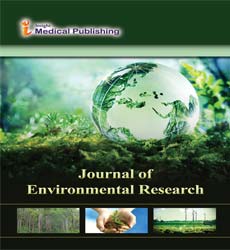Elemental Analysis and Risk Assessment of Soil and Vegetables from a Crude Oil-polluted Area in Lagos State, Nigeria
Abstract
Energy Dispersive X-rays Fluorescence (EDXRF) spectrometry was used to determine the concentrations of nineteen potentially toxic metals in soil and vegetable samples collected from an oil-polluted area of Lagos State. The Enrichment Factors (EF) were calculated to identify the pollution load index of these heavy metals in the soil and vegetable samples Telfairia occidentalis (fluted pumpkin) and Vernonia amygdalina (bitter leaf). The mean concentrations ranged from 36.765-39460 mg/kg, 1.436-14010 mg/kg, and 0.928-29520 mg/kg for the soil and the two vegetables samples respectively. The vegetable samples were enriched with heavy metals such as Fe, Cr, V, and Ti, (EF=1.000-1.43) with the source traceable to the oil-polluted soil. The mean concentrations of these heavy metals in the vegetable samples were higher than the recommended standards set by the Food and Agriculture Organization of the United Nations/World Health Organization and control. The results obtained in this study gave the baseline levels of these heavy metals in the samples and also indicated the risk of exposure of these environmental media to Fe, Cr, V, and Ti.
Open Access Journals
- Aquaculture & Veterinary Science
- Chemistry & Chemical Sciences
- Clinical Sciences
- Engineering
- General Science
- Genetics & Molecular Biology
- Health Care & Nursing
- Immunology & Microbiology
- Materials Science
- Mathematics & Physics
- Medical Sciences
- Neurology & Psychiatry
- Oncology & Cancer Science
- Pharmaceutical Sciences
